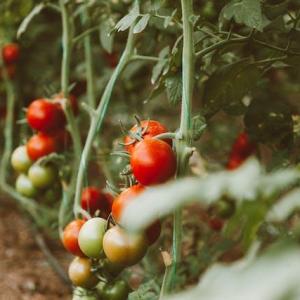
Introduction to Technological Innovations in Agriculture
Advancing Sustainability in Food Systems
Technology is playing a pivotal role in transforming traditional agricultural practices into more sustainable and efficient systems. This article explores the various ways in which technology is contributing to sustainable agriculture and food production.Precision Farming and Smart Agriculture
Enhancing Efficiency with Precision Agriculture
Precision farming leverages technologies such as GPS, sensors, and data analytics to optimize farming practices. By precisely managing inputs like water, fertilizers, and pesticides, farmers can increase efficiency, reduce waste, and minimize the environmental impact of agriculture.IoT-enabled Smart Agriculture Systems
Internet of Things (IoT) technologies enable smart agriculture systems that collect and analyze real-time data from farms. This data-driven approach allows for better decision-making, monitoring of crop health, and the efficient management of resources, contributing to sustainable and resource-conscious farming.Vertical Farming and Controlled Environment Agriculture
Maximizing Crop Yield in Vertical Farms
Vertical farming involves growing crops in vertically stacked layers or vertically inclined surfaces. This method optimizes space, reduces the need for extensive land use, and allows for year-round cultivation, contributing to increased crop yields in a sustainable and controlled environment.Hydroponics and Aeroponics for Resource-Efficient Farming
Hydroponic and aeroponic systems, which grow plants without soil, are resource-efficient methods of agriculture. These systems use water and nutrients more effectively, reduce the need for arable land, and can be implemented in urban environments, promoting sustainable food production.Biotechnology and Genetic Engineering
Developing Resilient and High-Yielding Crop Varieties
Biotechnology and genetic engineering contribute to the development of crops with improved resistance to pests, diseases, and environmental stress. This enables farmers to achieve higher yields with fewer resources, promoting sustainability in agriculture.Enhancing Nutritional Content and Quality
Genetic engineering can be employed to enhance the nutritional content and quality of crops. This innovation addresses nutritional deficiencies, contributes to food security, and supports the production of healthier and more resilient crops.Data Analytics and Predictive Modeling
Utilizing Big Data for Informed Decision-Making
Data analytics and predictive modeling help farmers make informed decisions by analyzing large sets of data related to weather patterns, soil health, and crop performance. This data-driven approach enhances precision in agriculture, minimizing resource use and maximizing productivity.Early Detection of Crop Diseases and Pests
Technology enables the early detection of crop diseases and pests through data analytics and remote sensing. Timely identification allows for targeted interventions, reducing the need for broad-spectrum pesticides and promoting environmentally friendly pest management.Renewable Energy in Agriculture
Harnessing Solar and Wind Power for Energy Needs
The integration of renewable energy sources, such as solar and wind power, into agricultural operations contributes to sustainability. This approach reduces dependence on non-renewable energy sources, lowers carbon emissions, and promotes eco-friendly farming practices.Implementing Efficient Water Management Systems
Technology aids in the implementation of efficient water management systems, including sensor-based irrigation and precision watering. These systems optimize water usage, reduce wastage, and address the challenges posed by water scarcity in agriculture.Challenges and Future Prospects
Addressing Technological Access Disparities
Despite the potential benefits, addressing disparities in technological access is crucial for ensuring that sustainable agriculture practices reach farmers of all scales and locations. Efforts are needed to bridge the digital divide and promote inclusivity in technology adoption.Continual Innovation for Sustainable Agriculture
The future of sustainable agriculture depends on continual innovation. Ongoing research and development in areas like artificial intelligence, robotics, and bioinformatics hold the potential to further revolutionize farming practices, making them even more sustainable and resilient.Conclusion: Nurturing a Sustainable Food Future
Building Resilient and Sustainable Food Systems
Technology is at the forefront of building resilient and sustainable food systems. By embracing innovative solutions, farmers and stakeholders in the agricultural sector can contribute to a future where food production is not only efficient and productive but also environmentally conscious and socially responsible.Collaboration for a Greener Agricultural Landscape
As the agriculture industry embraces technology for sustainability, collaboration among researchers, policymakers, farmers, and technology developers becomes increasingly important. Together, these stakeholders can work towards a greener and more sustainable agricultural landscape, ensuring a bountiful harvest for generations to come.
Article
Be the first comment
Elite Article














